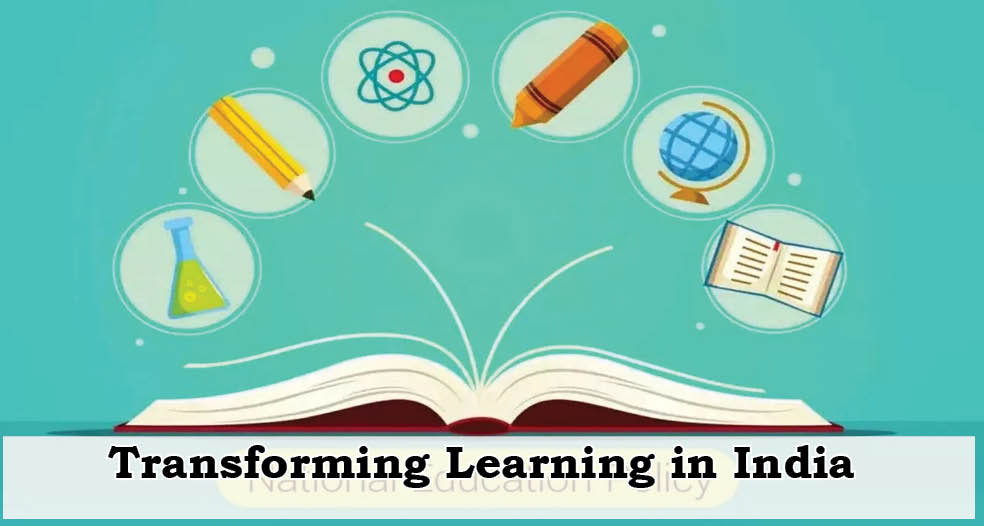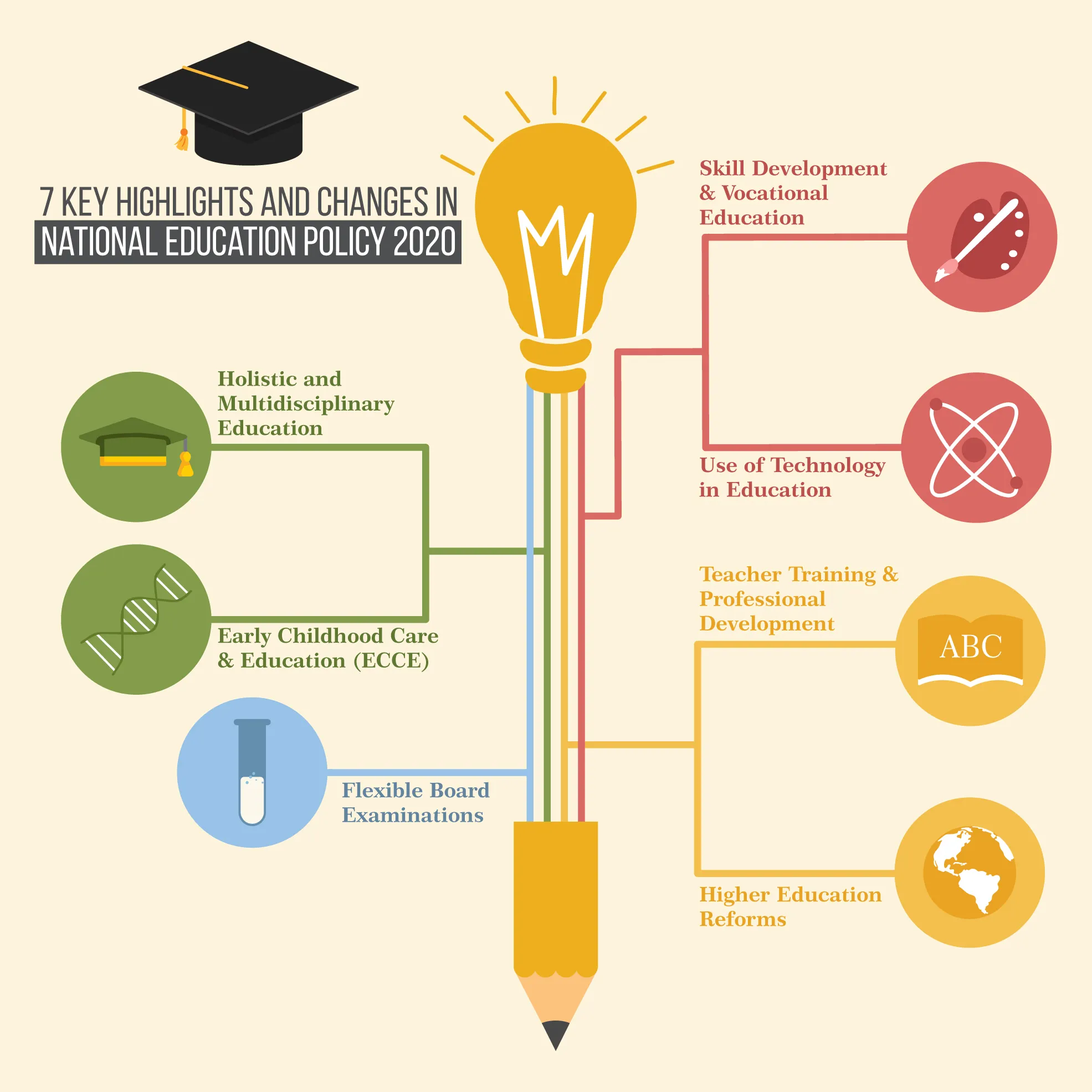Context
India has a rich legacy of education dating back to ancient times. The gurukul system involved students (shishyas) living with their teacher (guru), learning in a close and holistic environment. Renowned institutions like Nalanda attracted learners from across the world, and several fields of knowledge—such as mathematics, medicine, astronomy, and philosophy—had their origins in India. Education was seen as a noble pursuit.
- However, India did not undergo a Renaissance or scientific revolution like Europe. By the time the British took control of Indian affairs, traditional systems had begun to fade. Initially, education under British rule saw neglect, but later a modern, English-based system was introduced, replacing the age-old Indian models. Over time, this system became rigid, exam-driven, and less suited to modern needs. It faced criticism for low learning outcomes, limited skill training, and narrow academic pathways.
- The National Education Policy (NEP) 2020 was introduced to address these challenges and bring sweeping reforms. . Five years into its rollout, NEP 2020 is showing progress in foundational literacy, early childhood enrolment, and inclusive higher education.
About National Education Policy 2020:
The National Education Policy (NEP) 2020 is India’s first comprehensive education reform of the 21st century, replacing the National Policy on Education, 1986. Framed to meet the evolving needs of learners in a rapidly changing global environment, NEP 2020 aims to make education more holistic, flexible, and inclusive.
Reforms in School Education:
New Curricular Structure: 5+3+3+4
One of the most visible shifts under NEP 2020 is the replacement of the 10+2 school structure with a developmentally aligned 5+3+3+4 model:
- Foundational Stage (ages 3–8): Three years of pre-school followed by Classes 1–2
- Preparatory Stage (ages 8–11): Classes 3–5
- Middle Stage (ages 11–14): Classes 6–8
- Secondary Stage (ages 14–18): Classes 9–12
Early Childhood Education Gains
As of 2024, over 1.1 crore children are enrolled in Balvatikas, compared to 50 lakh in 2018—indicating a significant expansion in access. 496 Kendriya Vidyalayas now offer pre-primary classes. More than 4.2 crore students across 8.9 lakh schools have participated in Vidya Pravesh, a 12-week play-based module designed to prepare children for Grade 1. To support multilingual learning, 121 primers and the Jaadui Pitara (a multilingual teaching toolkit) have been developed in 22 Indian languages, giving structured pedagogical support to ECCE classrooms.
NIPUN Bharat: The NIPUN Bharat Mission, launched in 2021, aims to ensure foundational literacy and numeracy for all children by Grade 3 by 2025. According to ASER 2024, the results are promising:
- 23.4% of Class III students in government schools can now read a Grade II-level text—up from 16.3% in 2022, marking the highest level since 2005.
- In arithmetic, 27.6% of students can perform basic subtraction, up from 20.2% in 2022.
- Rural students have outperformed urban peers in both reading and arithmetic, as confirmed by the PARAKH national assessment survey.
Curriculum, Vocational Integration, and Multilingualism:
NEP 2020 removes rigid separations between academic streams. Students can now choose subjects across disciplines and blend academic with vocational learning. Vocational education has been introduced from Class 6, including hands-on internships.
The policy encourages teaching in the mother tongue or regional language until Grade 5, preferably till Grade 8. The three-language formula has been retained with greater flexibility. Languages such as Sanskrit, Pali, Persian, and other Indian languages have also been strengthened in school curricula.
Teacher Training and Assessment Reforms:
· To equip teachers for this new paradigm, over 14 lakh teachers have been trained under the Nishtha foundational programme. Assessments have also undergone reform, with the creation of PARAKH (Performance Assessment,
· Review and Analysis of Knowledge for Holistic Development), a national assessment centre to standardise learning evaluation. The SAFAL framework, already introduced in CBSE schools for Classes 3, 5, and 8, focuses on conceptual and application-based testing.
· Despite this momentum, only about half of government and aided schools currently offer pre-school education, and gaps remain in aligning curriculum goals with classroom infrastructure and teaching capacity.
Transformations in Higher Education
Enrolment and Social Inclusion
Between 2014–15 and 2022–23, total higher education enrolment grew from 3.42 crore to 4.46 crore. Enrolment among female students rose by 38.4%, increasing from 1.57 crore to 2.18 crore. Particularly significant is the growth in PhD enrolment among women, which jumped by 135.6%, from 48,000 to 1.12 lakh.
Social equity has seen notable gains:
- SC student enrolment increased by 50%
- ST enrolment rose by 75%
- Muslim student enrolment grew by 46.3%, from 15.3 lakh to 22.4 lakh
- Other minorities saw a 61% rise, from 6.5 lakh to 10.5 lakh
- In the Northeast, enrolment rose by 36%, with female students slightly outnumbering males
These numbers reflect NEP 2020’s emphasis on equity, regional inclusion, and gender parity.
Academic Bank of Credit and Flexible Learning:
To promote learner autonomy and academic mobility, the Academic Bank of Credit (ABC) has been established as a national digital platform for storing and transferring academic credits across institutions. As of July 2025:
- Over 32 crore ABC IDs have been generated
- 2,556 institutions have joined the platform
In parallel, NEP 2020 introduced a multiple entry-exit system, allowing students to receive a certificate after 1 year, a diploma after 2, a degree after 3, and an honours distinction after 4 years. However, uptake has been limited so far—only 31,000 undergraduates and 5,500 postgraduates have used this option—suggesting the reform is outpacing public awareness or institutional readiness.
Push for Multidisciplinarity
To promote broad-based education, 35 universities have received ₹100 crore each under PM-Usha to transition into multidisciplinary institutions. While some progress is visible, many engineering and teacher training colleges are yet to restructure their curricula. Institutes like IITs have started offering non-engineering courses to support interdisciplinary learning.
Research and Globalisation Efforts
The policy envisions setting up a National Research Foundation (NRF) to boost research capacity and funding. High-performing Indian universities will be allowed to open international campuses, while selected global institutions will be permitted to operate in India—bringing internationalisation into the fold of Indian higher education.
Technology and Online Learning
Digital learning is a central pillar of NEP 2020. The creation of National Digital Education Architecture (NDEAR) supports the integration of digital tools in teaching, planning, and assessment. The National Educational Technology Forum (NETF) will act as a think tank for technological innovation. The UGC has approved online degree programmes, and several technical colleges have introduced first-year engineering courses in regional languages, improving accessibility.
Challenges and Gaps in Implementation
- Political resistance from some states—especially over concerns of centralisation and language imposition—has slowed down adoption.
- Infrastructure and capacity gaps persist, particularly in integrating preschool education and supporting teacher training.
- The digital divide continues to limit access to e-learning in rural and underserved regions, where smartphone and internet penetration remain low.
- The target of 6% of GDP for education expenditure remains unmet, which restricts long-term investment in quality, infrastructure, and faculty development.
- The Right to Education Act (2009) still overlaps with the NEP, creating legal ambiguities in implementation frameworks.
Conclusion:
The National Education Policy 2020 is an ambitious attempt to reimagine Indian education in line with global best practices and domestic aspirations. Its impact is already visible in improved foundational outcomes, rising enrolment across social groups, and the creation of flexible, digitally enabled learning ecosystems. However, realising its full potential requires sustained political commitment, increased funding, state-level coordination, and institutional preparedness. With the right follow-through, NEP 2020 has the potential to transform India into a truly inclusive and knowledge-driven society.
| Main question: Examine the role of NEP 2020 in shaping inclusive education for marginalized communities such as SCs, STs, minorities, and women. How does it aim to address historical inequalities in higher education access? |








